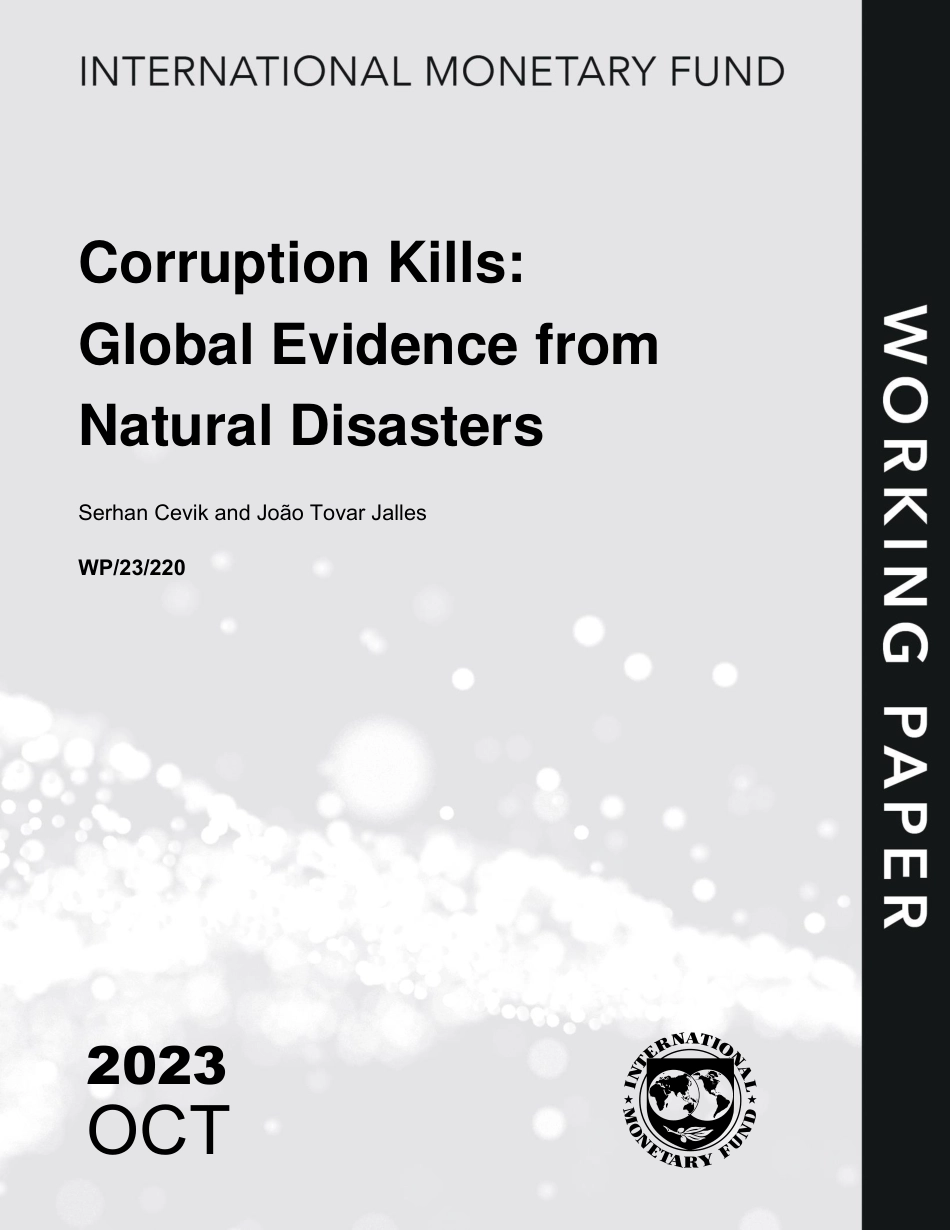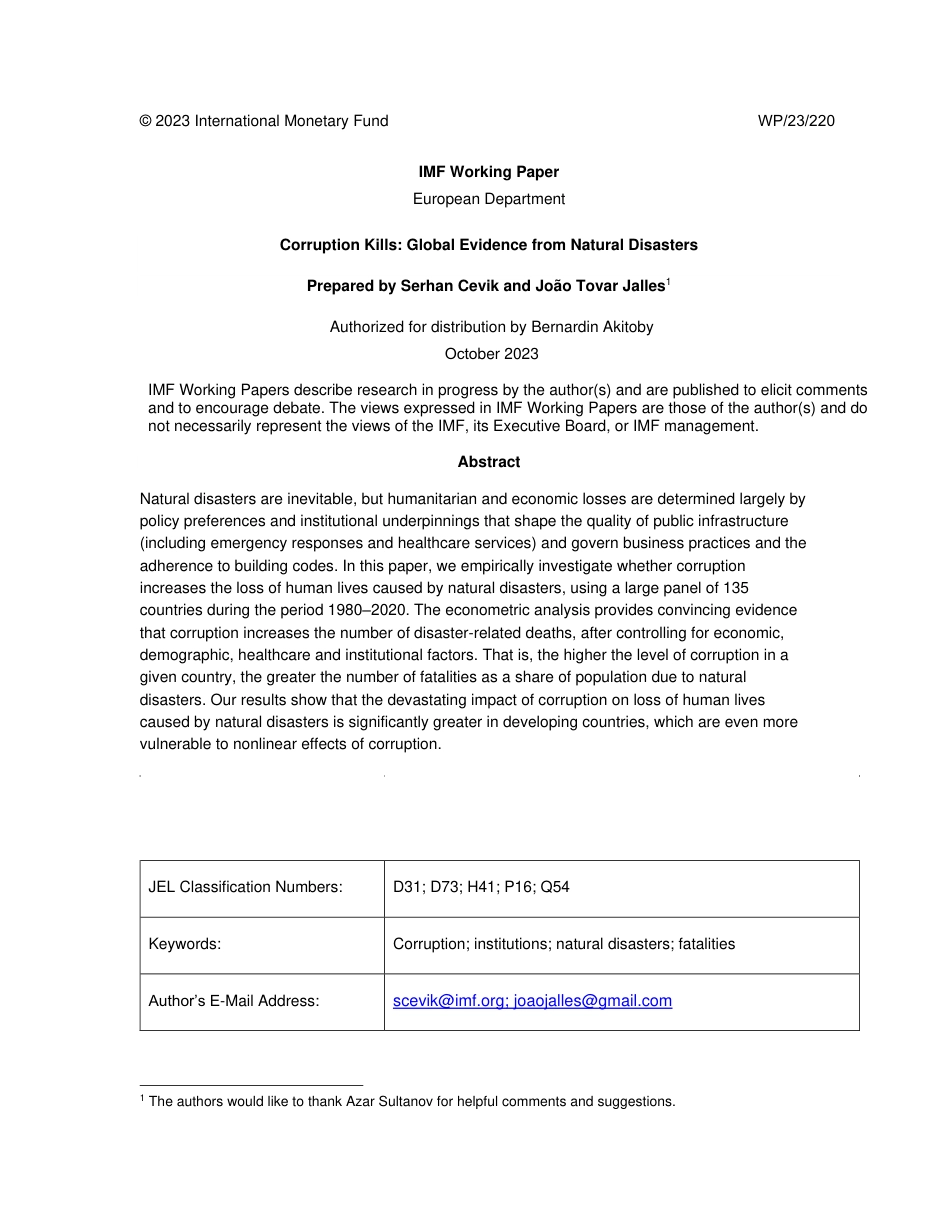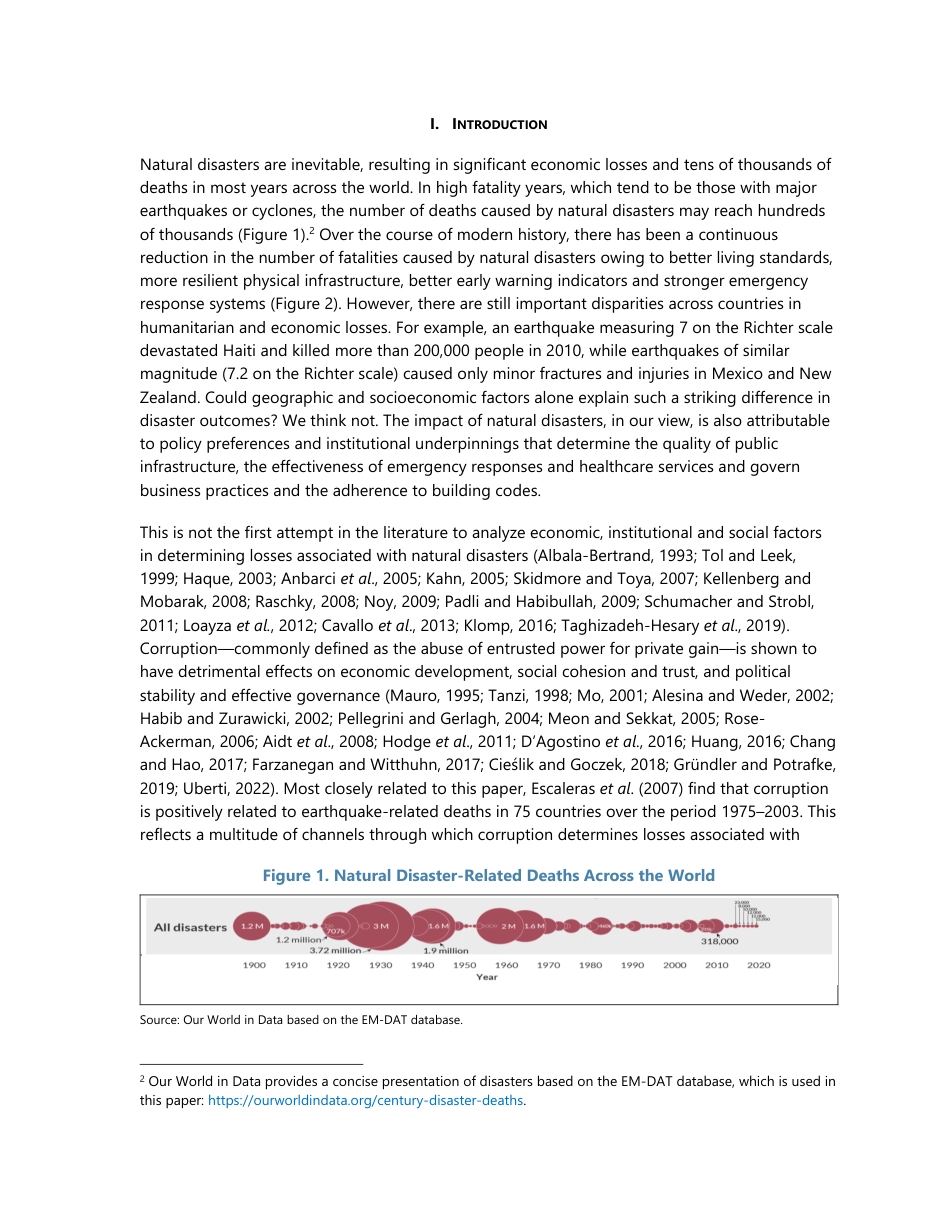2023 OCT Corruption Kills: Global Evidence from Natural Disasters Serhan Cevik and João Tovar Jalles WP/23/220 © 2023 International Monetary Fund WP/23/220IMF Working Paper European Department Corruption Kills: Global Evidence from Natural Disasters Prepared by Serhan Cevik and João Tovar Jalles1 Authorized for distribution by Bernardin Akitoby October 2023 IMF Working Papers describe research in progress by the author(s) and are published to elicit comments and to encourage debate. The views expressed in IMF Working Papers are those of the author(s) and do not necessarily represent the views of the IMF, its Executive Board, or IMF management. Abstract Natural disasters are inevitable, but humanitarian and economic losses are determined largely by policy preferences and institutional underpinnings that shape the quality of public infrastructure (including emergency responses and healthcare services) and govern business practices and the adherence to building codes. In this paper, we empirically investigate whether corruption increases the loss of human lives caused by natural disasters, using a large panel of 135 countries during the period 1980–2020. The econometric analysis provides convincing evidence that corruption increases the number of disaster-related deaths, after controlling for economic, demographic, healthcare and institutional factors. That is, the higher the level of corruption in a given country, the greater the number of fatalities as a share of population due to natural disasters. Our results show that the devastating impact of corruption on loss of human lives caused by natural disasters is significantly greater in developing countries, which are even more vulnerable to nonlinear effects of cor...



